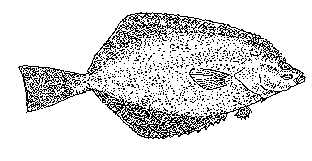SOME WEST COAST COMMERCIALLY IMPORTANT SPECIES OF FISH AND SHELLFISH
DOVER SOLE (Microstomus pacificus)
Dover Sole is widely distributed from northern Baja California to the Bering Sea and is available year round. It inhabits mud or sandy bottoms and is caught from 5 to 750 fathoms. In the Washington, Oregon, and California area this fish is the most abundant of the flatfishes. It is very important commercially. It is marketed as fillets and sold as Dover sole fillets or sometimes fillet of sole. It has good flavor and good keeping qualities.
PACIFIC COD (Gadus macrocephalus)
Pacific Cod is found in cooler regions of the Pacific Ocean and adjacent seas; Japan to the Bering Sea and to Santa Monica, California. It usually lives near the bottom, shallower in the springtime and deeper in the fall. Pacific Cod is of significant importance in the commercial fishing industry. It is marketed fresh and frozen, often as fish sticks.
ENGLISH SOLE (Pleuronectes vetulus)
This flatfish is distributed from the Bering Sea and eastern Aleutian Islands to San Cristobal Bay, Baja California. It is found on sandy bottoms from 0 to 300 fathoms. Young fish often inhabit the intertidal areas. English Sole is called Lemon Sole in some areas because it sometimes has a lemon odor. It is one of the top three Flatfishes in terms of pounds caught by commercial trawlers. English Sole has white flesh, with a very delicate texture.
PETRALE SOLE (Eopsetta jordani)
Petrale Sole lives over rocks and soft ocean bottoms from the Bearing Sea to Baja California. It is caught from 20 to 200 fathoms (120 to 1,200 feet) and is available year round. It is one of the larger Flatfishes, and has an excellent meat quality. Petrale Sole has olive brown skin and ivory, or cream- colored flesh. The flavor and thickness of the fillets makes it the "Cadillac" of the Flatfish family.
PACIFIC PINK SHRIMP (Pandelus jordani)
Shrimp are crustaceans that live on the ocean bottom, and feed on plankton and krill. They are caught from Central California to Northern Washington. Pink Shrimp is caught between 60 and 100 fathoms (360 and 600 feet). It is available from April 1 to October 31, however; some are Individually Quick Frozen (IQF) for sale throughout the year. There are several hundred Shrimp species, which range from two pounds to barely visible. Pacific Pink Shrimp is popular because of its meaty texture, lack of bones and ready-to-eat convenience.
REX SOLE (Errex zachirus)
Rex Sole is found in the Bering Sea and Aleutian Islands to Cedros Island, central Baja California. It is available year round. Rex Sole usually lives on sand and mud bottoms and is caught from 30 to 350 fathoms (180 to 2,100 feet). It is a relatively small Flatfish that has an elongated shape. Fillets are thin and very delicate, and because the species is small it is often served dressed.
STARRY FLOUNDER (Platichthys stellatus)
Starry Flounder lives in bays and estuaries over soft bottoms and off the coast from the Arctic Ocean to Santa Barbara, California. It is caught as deep as 150 fathoms (900 feet). It feeds on crabs, shrimps, worms, clams and small fishes. Flounders can tolerate very low salinity, and are often captured in major rivers well away from the open ocean. Their popularity is due to their light, delicate flavor and their lack of bones. The meat is cream with grey or green coloring in the grain of the fillets.
LINGCOD (Ophiodon elongatus)
Ling Cod is a voracious predator, feeding on various large fishes, crustaceans, and mollusks from Kodiak Island, Alaska to Punta San Carlos, Baja California. It is caught from the surface to 200 fathoms (1,200 feet). Ling Cod is one of a number of species called "Greenlings," and has spots of brown, green, and tan, with accents of orange or light blue. However, the green colored fillets will cook white.
PACIFIC WHITING (HAKE) (Merluccius productus)
Pacific Whiting is part of the cod family and lives in the open sea from the Gulf of
Alaska south to the Gulf of California. Whiting is caught from the surface to 500
fathoms (3,000 feet) 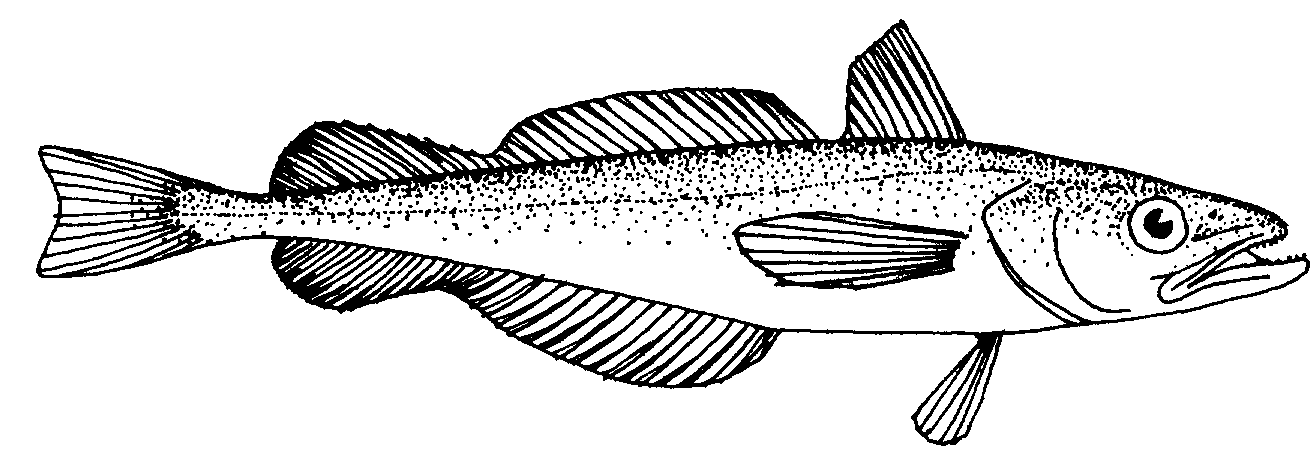
and is available April through July. It feeds mostly on other fishes,
shrimp and plankton. An appetizing texture can be preserved if they are processed and chilled quickly, which is why plants in Oregon, Washington, and California process several million pounds of Whiting a year. Pacific Whiting has a dark back and silver sides, with white, mild flavored meat. The texture of Pacific Whiting is flaky, and because the meat lacks much connective tissue, it breaks up easily.
SABLEFISH (Anoplopoma fimbria)
This fish is caught from 80 to 1,000 fathoms (480 to6,000 feet). Most Sablefish are sold to Japan, in part, due to the current exchange rate. Sablefish, also known as Blackcod and Butterfish, can weigh up to 40 pounds, and have skin that ranges from slate black to a greenish color. They feed on fishes, worms and crustaceans. Sablefish live on soft ocean bottoms in deep water from the Bering Sea to Isla Cedros, Baja California. 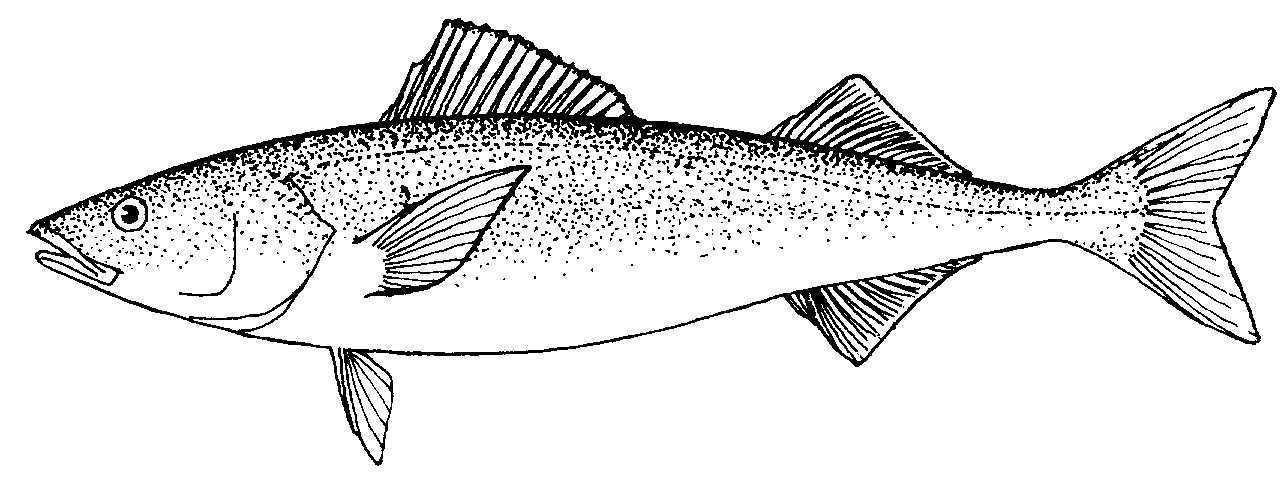
They are streamlined, with a slender tail section, and have a higher fat content than other trawl fish. This makes them rich and moist, and excellent for smoking.
ROCKFISH (Sebastes spp.)
Rockfish are caught almost exclusively off the Pacific coast, while Red Snapper is
caught in Atlantic and gulf waters. For marketing purposes, the name Red Snapper
has been used in place of Rockfish. In Oregon, 12 Rockfish species can legally be
called Snapper. Rockfish are 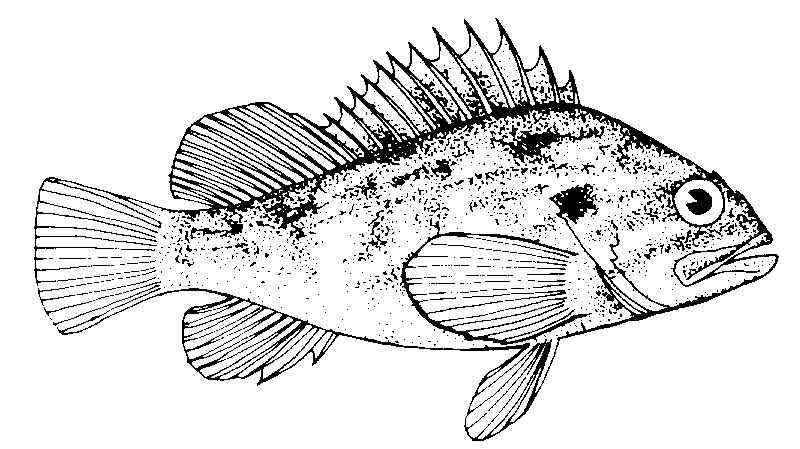
the most colorful and dramatic fish caught by Oregon
trawlers. Rockfish are a firm, flaky, meat fish with a somewhat fibrous texture quite
unlike the "velvety" texture of Snapper. They come in a rainbow of colors, as you can
see from their names: Black Rockfish, Canary Rockfish, Yellowtail Rockfish, and so
forth.
CHANNEL ROCKFISH (Sebastolobus spp.)
Channel Rockfish live over deep, soft ocean bottoms and sometimes around reefs from
the Bering Sea to northern Baja California. They feed on crustaceans and other
invertebrates. Channel Rockfish, also known as Thornyheads, are available year round
and are caught 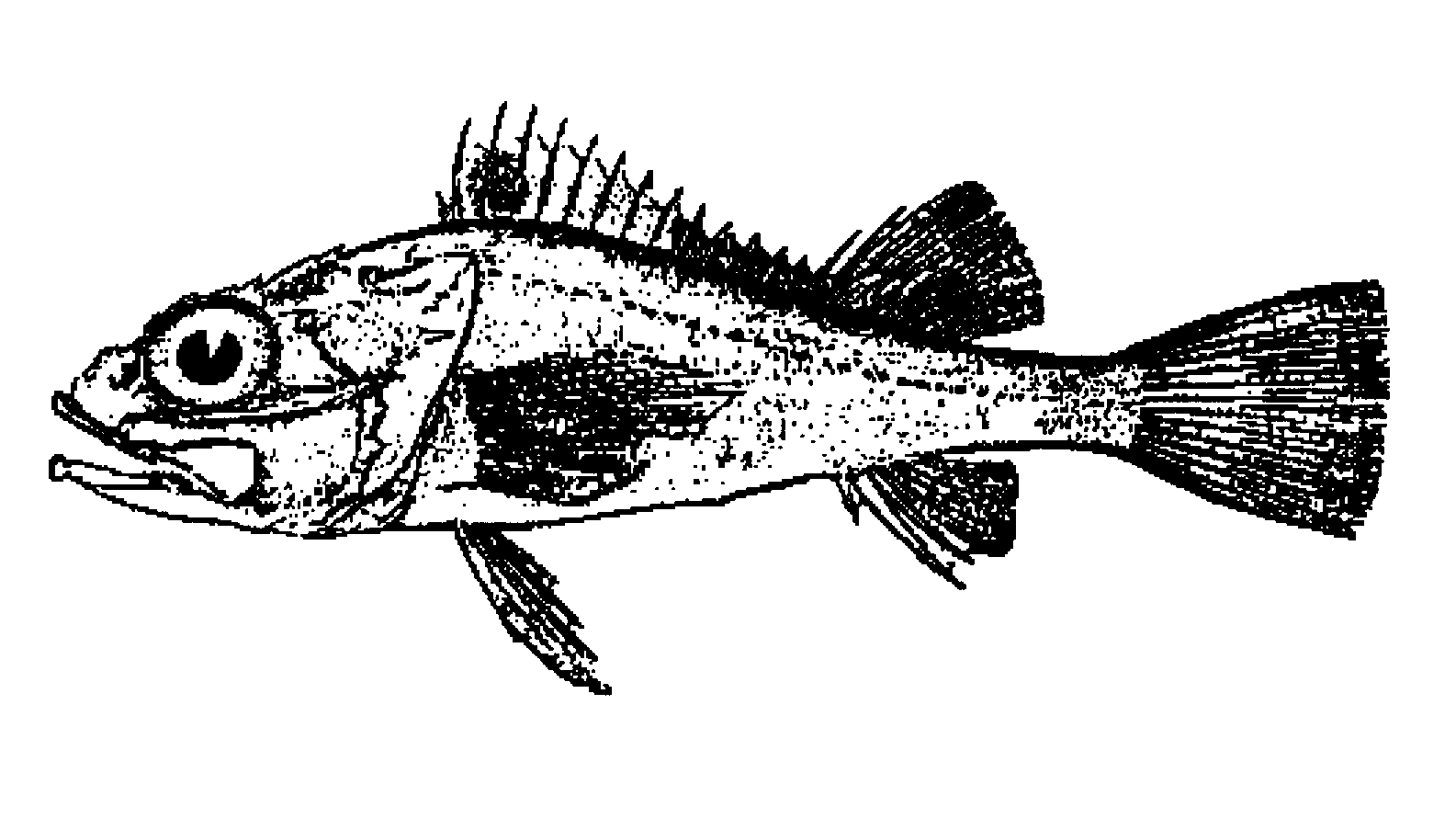
between 180 to 838 fathoms (1,080 to 5,028 feet). Shortspine Thornyheads live on soft bottoms in deep water and Longspine Thornyheads live offshore on soft bottoms. The flesh of Thornyheads is bright cream which contrasts dramatically with the red tail fin. This fish has the whitest flesh of the Rockfish family.
DUNGENESS CRAB (Cancer magister)
Dungeness Crab mainly live on sandy bottoms and in eelgrass beds. Their diet
consists primarily of clams, but they also feed on smaller crustaceans and fish. During the
day the Dungeness Crab remains buried with only the eyes and antennae exposed.
This species supports commercial fisheries from Kodiak, Alaska to central California.
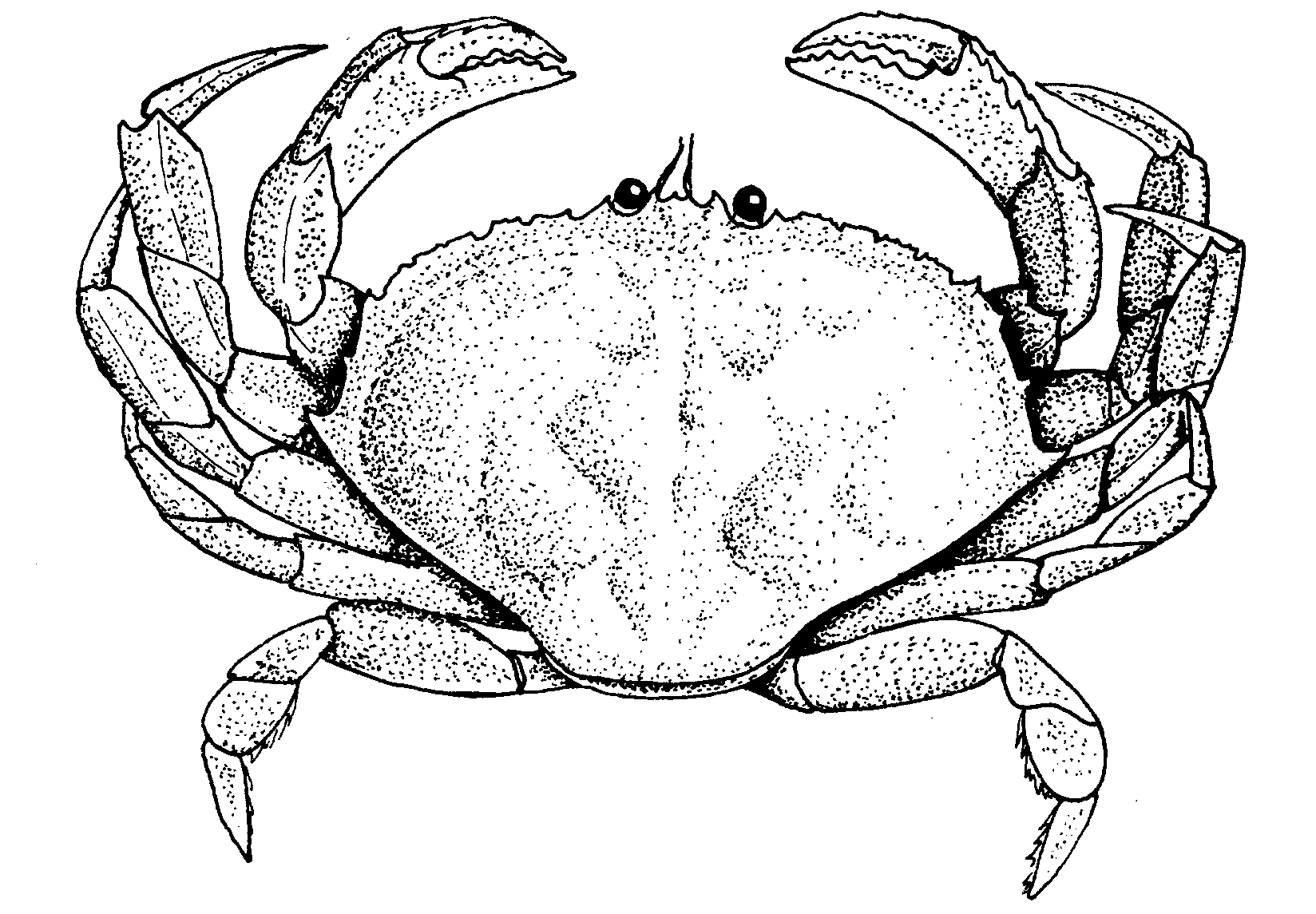
PACIFIC HALIBUT (Hippoglossus stenolepis)
Pacific Halibut is the largest Flatfish in our area. They are found from the Sea of Japan to the Bering Sea and to Santa Rosa Island. Pacific Halibut lives on a variety of bottom types; young near the shore and adults deeper to about 3600 feet.
